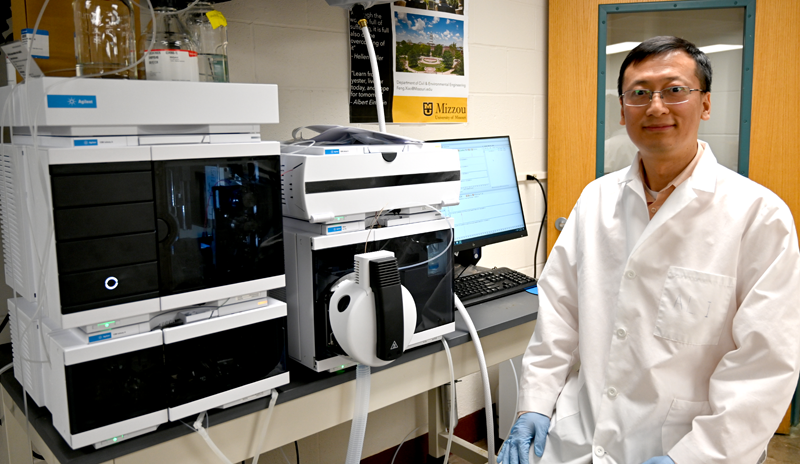January 09, 2024

Water treatment systems in the U.S. are more than a century old, allowing contaminants to pollute our drinking water and cause health problems. There are technologies that would help states and cities filter out these chemicals without having to replace entire treatment systems; however there’s no mandate for governments to install them. Short of that, there are non-technical solutions that could help reduce pollution levels.
Civil and Environmental Engineering Associate Professor Feng “Frank” Xiao outlined these challenges and strategies in a paper published in a Nature journal, Nature Water. Xiao is specifically looking at ways to treat per- and polyfluoroalkyl substances (PFAS), or ‘forever’ chemicals, which are found in household and industrial products. These chemicals are ending up in our water and causing various medical conditions.
The goal of the paper is to encourage the U.S. to move forward in terms of mitigating these risks, Xiao said.
“The U.S. is a superpower but we’re using outdated drinking water systems that were developed more than 100 years ago,” he said. “They worked perfectly before World War II, but with industrialization we have so many new challenges, like PFAS entering into water sources. It’s time for the U.S., the Environmental Protection Agency and everyone to think about how to upgrade drinking water systems to deal with PFAS and other contaminants in the future.”
While completely overhauling the nation’s public water treatment facilities might not be feasible, Xiao stressed that there are technologies that have been shown to remove PFAS from drinking water and are currently in use in select cities. One New York town, for instance, removed PFAS from the water supply in months using a granular activated carbon treatment system. Other technical solutions include ion exchange systems and reverse osmosis.
Even though solutions exist, they’re tricky to implement without federal requirements. That’s because implementing these technologies could be expensive, and those costs could be passed on to consumers through water bills.
“Some bigger cities are already using these technologies, but they’re not required for public drinking-water treatment facilities in the U.S.,” Xiao said. “Considering the benefits to the public health, every public drinking water system should have one of them to address PFAS and other pollutants that cannot be effectively removed by the 100-year-old conventional drinking-water treatment system. We should be comfortable to turn on the tap and drink our water.”
There are also strategies to lower PFAS levels without the technologies, but the implementation of these non-technical strategies requires state-wide sampling and survey efforts. Xiao’s paper outlines several ideas, including finding and mapping the sources or hotspots of PFAS entering drinking-water sources and mitigating that pollution. Another is to relocate wells where high levels of PFAS have been identified. Alternatively, water sources with higher levels of contaminants could be merged with sources that have lower levels of PFAS to dilute the pollution.
“Getting to zero may not be realistic but we want levels to be as low as possible,” he said. “While there are non-technical solutions for a temporary fix, we really want to promote the technical solutions. They’ve been on the market for years and have been successful. Funding is available from the federal government to upgrade the 100-year-old conventional drinking-water treatment systems.”
The paper, “Cross-national challenges and strategies for PFAS regulatory compliance in water infrastructure” was published in Nature Water in December 2023 (Nature Water, 1, 1004-1015, 2023). Co-authors include Professor Boalin Deng and international collaborators Dionysios Dionysiou, Tanju Karanfil, Kevin O’Shea, Paolo Roccaro, Zhong John Xiong and Dongye Zhao.
Learn more about Xiao’s work with ‘forever’ chemicals here.